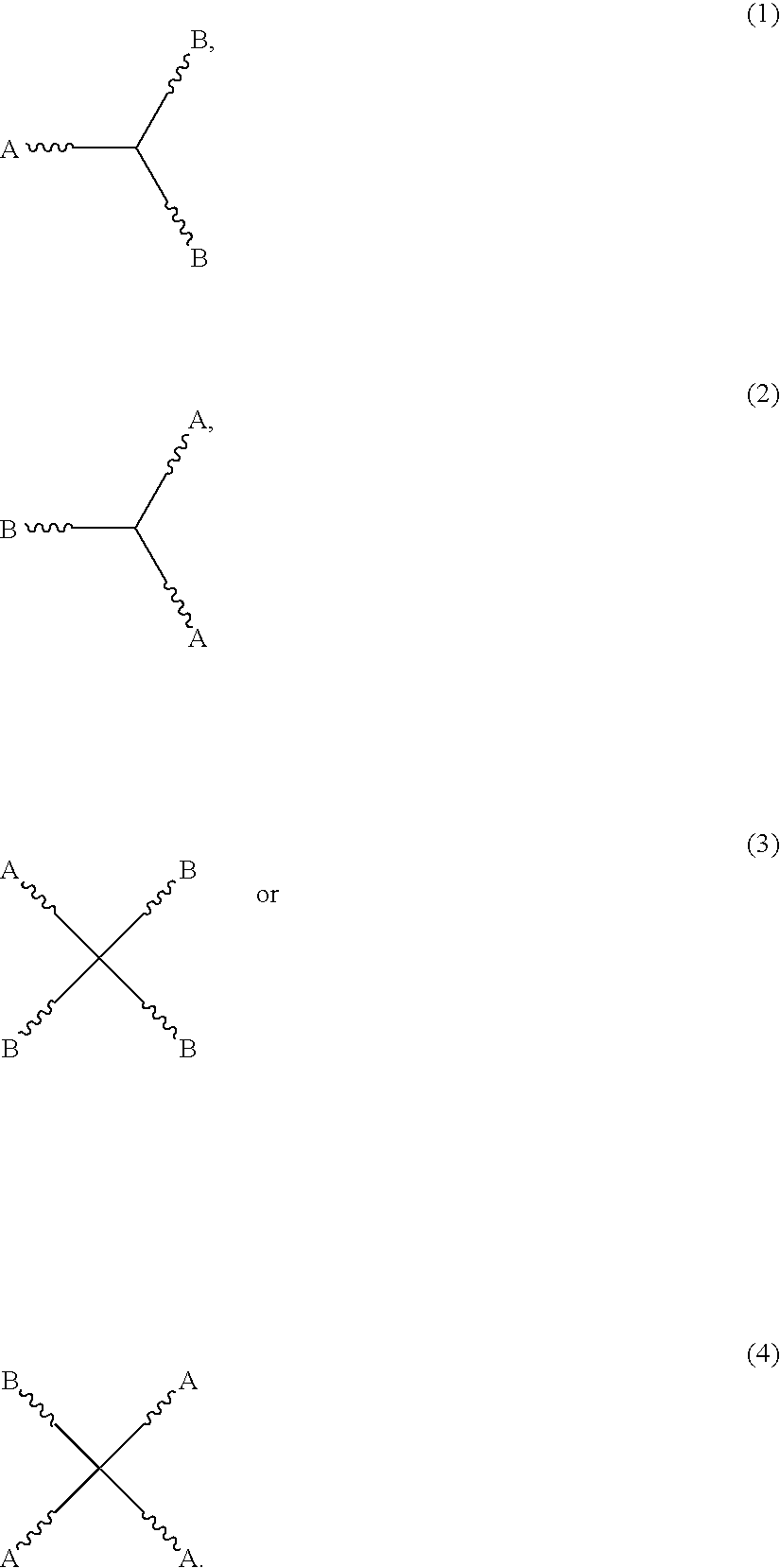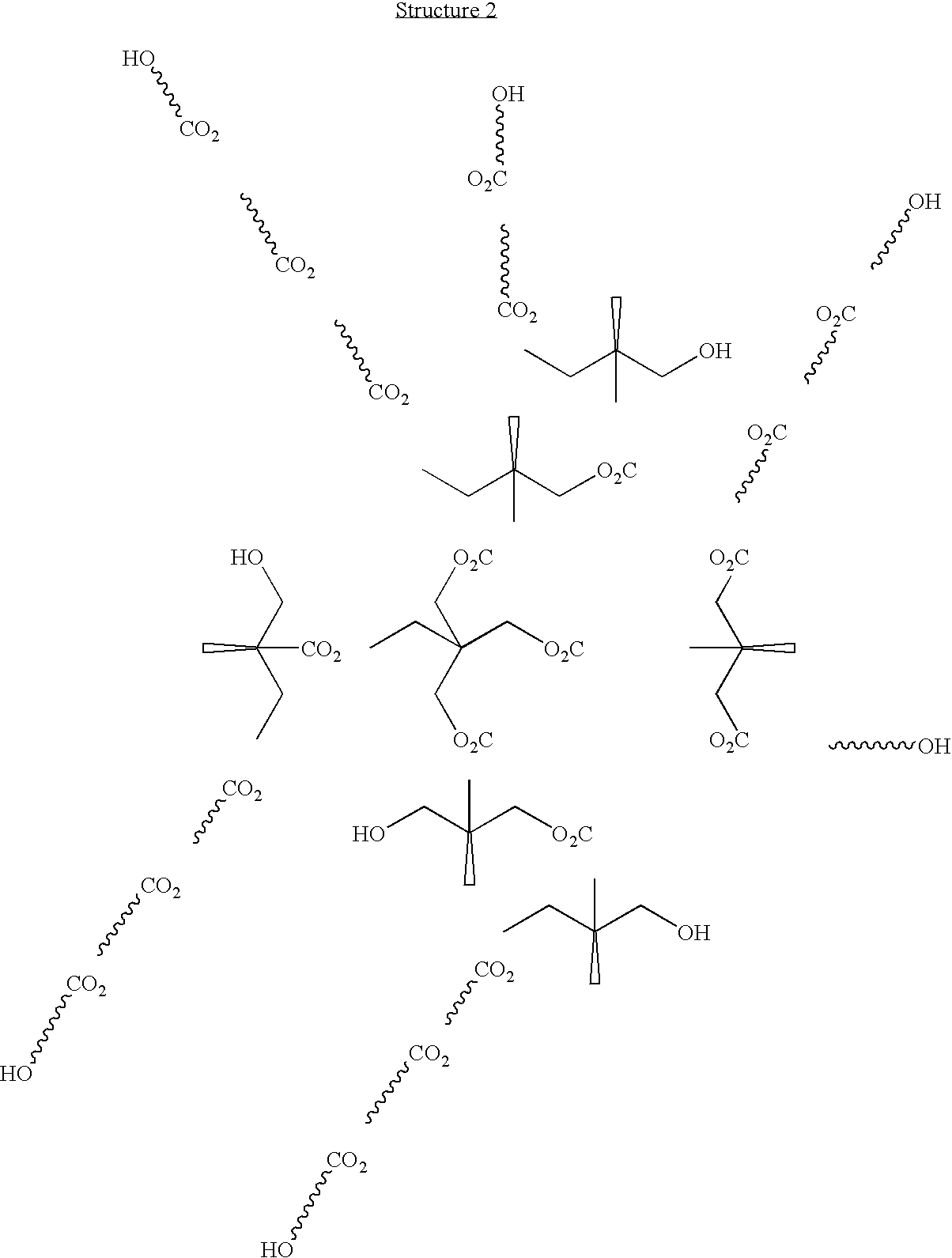Two component coating compositions containing highly branched copolyester polyol
a polyol and copolyester technology, applied in the direction of polyester coatings, coatings, transportation and packaging, etc., can solve the problem that current commercially available coating compositions do not have these unique characteristics
- Summary
- Abstract
- Description
- Claims
- Application Information
AI Technical Summary
Benefits of technology
Problems solved by technology
Method used
Image
Examples
examples
The following highly branched copolyester polyol solutions were prepared and used to form coating compositions.
Highly Branched Copolyester Polyol-Solution 1
A highly branched copolyester polyol was synthesized by esterifying dimethylolpropionic acid and ε-caprolactone with a Tin(II) Catalyst as follows:
The following constituents were charged into a 3 liter three-neck flask equipped with a mechanical stirrer, thermocouple, short path distillation head with a water condenser under nitrogen flow: dimethylolpropionic acid (DMPA, 320 g, 2.39 mole), ε-caprolactone (640 g, 5.6 mole), tin (II) di(2-ethylhexanoate)(Sn (02 CC7H15)2), 6 g, 0.015 mole), xylene (40 ml) and heated at 180° C. The reaction progress was monitored by the acid number measurements and by the water volume collected. After 7 hours, 32 ml water was collected, 1 g sample was withdrawn and dissolved in 10 ml DMSO (dimethyl sulfoxide), and the acid number (8.3) was determined by titration with 0.1 N KOH in methanol. The...
examples 1 and 1a
Coating Compositions of Examples 1 and 1A were prepared as follows:
Example 1Example 1AParts byParts byWeightWeightPortion 1Highly Branched Copolyester Solution 127.2125.83(prepared above)Propylene Glycol Monomethyl Ether11.379.57Acetate (PM Acetate)20% Solution Byk 301 (Flow Additive0.270.27from Byk-Chemie in PM Acetate)1% Dibutyl Tin Dilaurate in Solution in1.371.37Methyl Ethyl KetonePortion 2Tolonate ™ HDT LV (Isocyanurate9.775.33Trimer of Hexamethylene diisocyanatefrom Rhodia, Inc.)IPDI-T1890L (Trimer of Isophorone0.07.62Diisocyanate from Degussa Corp. -Coatings and Colorants
For each of Examples 1 and 1A, the constituents of Portion 1 were charged into a mixing vessel in the order shown above and mixed then Portion 2 was premixed and charged into the mixing vessel and thoroughly mixed with Portion 1 to form each of Examples 1 and 1A. Each of the coating compositions was applied with a doctor blade over a separate phosphated cold roll steel panel primed with a layer of PowerCr...
examples 2 and 2a
Coating compositions of Examples 2 and 2A were prepared as follows:
Example 2Example 2APartsParts byby WeightWeightPortion 1Highly Branched Copolyester Solution 235.7733.99(prepared above)Propylene Glycol Monomethyl Ether14.6412.35Acetate (PM Acetate)20% Solution Byk 301 (Flow Additive0.360.36from Byk-Chemie in PM Acetate)1% Dibutyl Tin Dilaurate Solution in1.781.78Methyl Ethyl KetonePortion 2Tolonate ™ HDT LV (Isocyanurate12.456.8Trimer of Hexamethylene diisocyanatefrom Rhodia, Inc.)IPDI-T1890L (Trimer of Isophorone0.09.72Diisocyanate from Degussa Corp. -Coatings and Colorants
For each of Examples 2 and 2A, the constituents of Portion 1 were charged into a mixing vessel in the order shown above and mixed then Portion 2 was premixed and charged into the mixing vessel and thoroughly mixed with Portion 1 to form each of Examples 2 and 2A. Each of the coating compositions was applied to the panels described in Example 1 using the same procedure of Example 1 and dried and cured accord...
PUM
| Property | Measurement | Unit |
|---|---|---|
| weight percent | aaaaa | aaaaa |
| weight percent | aaaaa | aaaaa |
| glass transition temperature | aaaaa | aaaaa |
Abstract
Description
Claims
Application Information
 Login to View More
Login to View More - R&D
- Intellectual Property
- Life Sciences
- Materials
- Tech Scout
- Unparalleled Data Quality
- Higher Quality Content
- 60% Fewer Hallucinations
Browse by: Latest US Patents, China's latest patents, Technical Efficacy Thesaurus, Application Domain, Technology Topic, Popular Technical Reports.
© 2025 PatSnap. All rights reserved.Legal|Privacy policy|Modern Slavery Act Transparency Statement|Sitemap|About US| Contact US: help@patsnap.com



